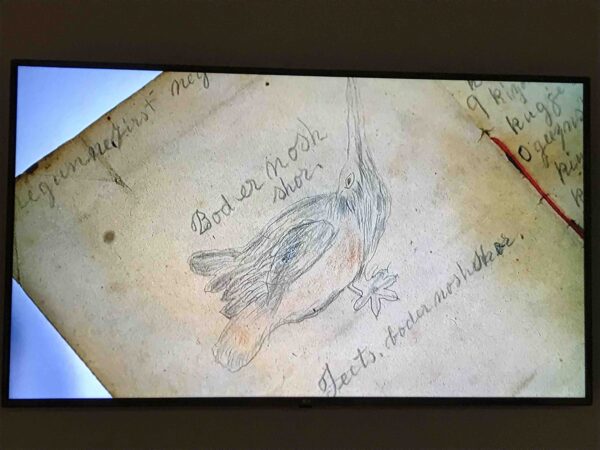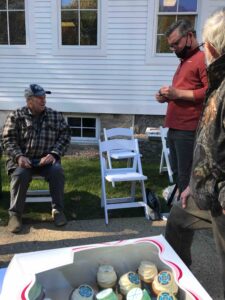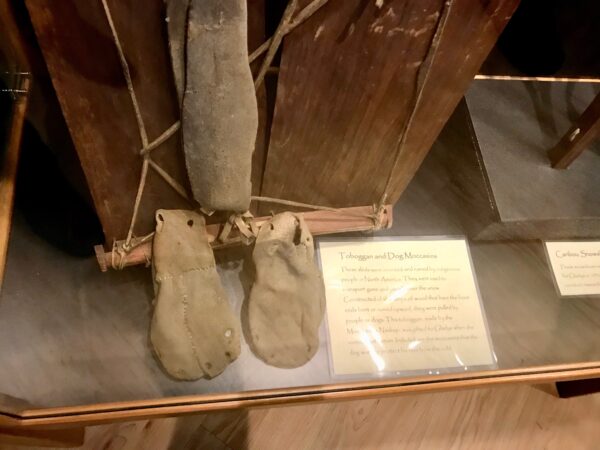Then & Now: Mashantucket Pequot, Tantaquidgeon Museum, Logee’s
Listen, learn.
We control and manipulate the path of the burn by pouring water on the sides of the log, ensuring a nice even burn to best shape the canoe (mushooy) 💦🔥🛶 #boatbuilding #canoe #education #fyp #pequot #history #water #WaterIsLife #traditional #tradition #nativeamerican #fire #boatlife #boating #building #native #learn #fyp #culture #fishing #fishingislife #survival #survivalist
Posted by Mashantucket Pequot Museum & Research Center on Wednesday, September 20, 2023
“We control and manipulate the path of the burn by pouring water on the sides of the log, ensuring a nice even burn to best shape the canoe (mushooy).”
Take a field trip. Make it three. Not far in miles. So much to observe and absorb.
Did you know? Logee’s Greenhouses was started by William D. Logee in 1892 in Danielson, Connecticut. It began as a cut…
Posted by Logee's Tropical Plants on Wednesday, September 20, 2023
“Observe, Concentrate and Remember.” — Harold Tantaquidgeon
Life unfolds in strange ways, but like a river finds a way.
The Tantaquidgeon Museum, 90 years ahead of its time, is an artifact in and of itself. Each stone placed. Stories kept.
“At the height of the Great Depression, a Mohegan named John Tantaquidgeon decided to build a dream. Although blind in one eye and on crutches, he and his children, Gladys and Harold, founded the Tantaquidgeon Indian Museum in 1931. Since that time, visitors have traveled here from around the world to experience the spirit of the Mohegans and the beauty of Native America. Featuring eastern woodland Indian artifacts, the museum’s mission is to showcase objects from a Native American perspective.”
“The Tantaquidgeon Museum's parking address is 1 Church Lane, Uncasville, Connecticut, the museum is just across the street. It is operated by the Mohegan Tribe and tours are conducted by Mohegan Tribal members.”
Note: For updates and events, visit the museum's Facebook page, linked here.
On the drive there for the event, noting place names along the way, including Occum, Yantic (what does it mean?). Other word clues, -paug, –chaug.
Arrival and a shuttle bus with seatbelts, meeting Al, so many stories. And here we are. Enter the Mohegan Cultural Preservation Center, a new building that serves as a gateway to visiting and orientation to the Tantaquidgeon Museum and property, related sites. A paper map and brochure is handed to each visitor. Greetings.
Gifts in baskets include arrow points, smudge bundles, a blue book with the Mohegan logo and Mundu Wigo; a pen, paper tattoo. Walking into area that showcases the actual diaries of Fidelia Fielding, one of the last fluent speakers of the Mohegan language. Getting goosebumps seeing the sketched bird and beautiful handwriting, hearing about the journey of these precious papers and glancing up at the video story displayed ahead. Wow. A language unlocked, the touchstone of a culture.

The bird drawing in Fidelia Fielding's diary, enhanced a bit for clarity in this still image from a video clip shown in the center.
“Then something unexpected happened in 1918. During the Spanish Flu epidemic, Fidelia’s adopted son, John Henry Cooper (Fielding), a carpenter working in Norwich, CT, came home to quarantine on the reservation in his mother’s old cabin. With little to do, he rummaged through her old things and papers. Among them, he found several of Fidelia’s forgotten diaries. He contacted Speck—-now chair of the Department of Anthropology at the University of Pennsylvania—-to share the incredible news. When the flu pandemic subsided, Speck asked Gladys Tantaquidgeon, by this time a young adult, to join him in researching the diaries and other papers that recorded Mohegan historical records, traditional stories, beliefs, and cultural practices. Tantaquidgeon worked with Speck to adapt some of this information into a publication for the Bureau of American Ethnology, and was also inspired to write her own book, Folk Medicine of the Delaware and Related Algonkian Indians (Pennsylvania Historical and Museum Commission, 1941, reissued in 1972).
“When Gladys, her brother Harold, and their father John founded the Tantaquidgeon Indian Museum in 1931, they hoped to archive Fidelia’s papers alongside other Mohegan records and heritage items. Speck held onto the diaries for two more decades, but after he passed away unexpectedly in 1950, the other Mohegan items were nowhere to be found.”
–excerpt from Library Journal Mohegan Tribe, Cornell Partner to Repatriate Fidelia Fielding Diaries by Lynn Malerba, Melissa Tantaquidgeon Zobel, & Tamar Evangelestia-Dougherty; March 04, 2021
Why, oh why, is this not taught in schools with field trips, meet the people who carry the history forward? All of this so much more interesting.
“Prior to European settlement, the Mohawk and other Native American tribes utilized the trail to fish during the annual spring salmon runs up the Connecticut and Deerfield Rivers and to hunt the lush valleys surrounding the rivers. They also used the trail to make raids on their enemies. Toward the end of King Philip’s War in 1676, Metacom, also known as King Philip, the leader of the Wampanoag Confederacy, traveled the trail and failed to recruit the Mohawks in his war against the settlers. The trail also became a principal route of the French and their Native American allies during the French and Indian War from 1754 to 1763. During the American Revolution, Benedict Arnold, still an American patriot at the time, traveled the trail recruiting additional troops while on the way to Fort Ticonderoga, New York, with his letter of command.”
—U.S. National Park Service history
For more about the Mohegan Language Restoration Project, see https://www.mohegan.nsn.us/about/information/restoration-project#:~:text=The%20Mohegan%20Language%20Project%20pieces,tribes%20who%20have%20similar%20dialects.Editor's note: This story was published in part originally in 2021. To be present on Nov. 6, 2021, an honor. To share what was observed. From wampum, Uncas, maps to chart other excursions. The healthy trees. Gingko circle behind the church. Ordering books related to these places, people stories. The Mashantucket Pequot Tribe across the river, local libraries. Just the beginning. So many images, will add a page of those, coming up. Mister bison, seen on a recent trip along the Mohawk Trail, but that's another story.
I'm back from Scotland, and everywhere in the house, my Meemo is not. It was bearable while I was away, but being home is excruciating. Grief, grief, grief. pic.twitter.com/WkwP9CbXJA
— Silke Weineck (@silkiestmaria) August 8, 2023
“How we treat our fellow creatures is only one more way in which each one of us, every day, writes our own epitaph- bearing into the world a message of light & life or just more darkness & death, adding to the world's joy or to its despair.”
Matthew Scully pic.twitter.com/b3iphPHnnI
— urbanhorsedoc☮️ (@urbanhorsedoc) September 20, 2023


